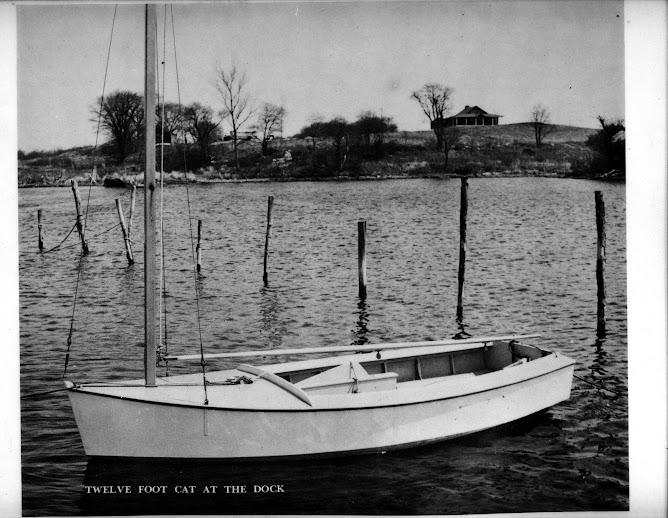The next step will be to fit the template to the other side and prepare to cut the other panel out.
All in all the installation went great and we can see the day coming that we will be able to turn her over and start working on the top of the boat!

Follow me as I build a 12 foot catboat from plywood and pine. The boat was designed by Edson Schock in the 1940's. This is a project born of a desire to have another boat to sail here in Puerto Rico that will stand-up to the Trade winds. The sail plan will be changed to a gaff rigged sail. All the lumber is locally bought and pine will be substituted for oak, which is not readily available here. Marine plywood will be used.
I began to work on the keel today. I laid out the batten along the keel slot and marked the position of each frame. I then transferred the frame locations to the keel board. I marked the width of the keel at each frame and laid a batten along these marks to make a curve for the keel shape.
I then took my saber saw and slowly cut the excess wood off from either end. A quick pass of the power planer squared and smoothed everything and it turned out great
Now I will wet it and, putting 2 blocks (cat is optional) in the middle, put some curvature into it to make it easier to set it into the boat.